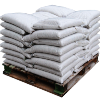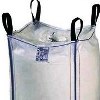| Aadhunik Industries is a manufacturing group company. Aadhunik Industries is pioneer manufacturers of Specialty Chemicals, Pharmaceutical Excipients, Food Fragrance & Flavor chemicals in India. It has toll manufacturers and representatives in UAE, Europe, Canada & USA and agents & customers in all countries like USA, Canada, Europe, UAE Dubai, South Africa, Tanzania, Kenya, Egypt, Nigeria, Uganda, Turkey, Mexico, Brazil, Chile, Argentina, Malaysia, Indonesia, Thailand, Korea, Japan, etc. Halal & Kosher certified Ferric Chloride Hexahydrate Anhydrous Manufacturers made in a FDA-GMP plant is offered. |
| The units have one or more of the certifications like FDA GMP, ISO 9001, ISO 22000, HACCP, REACH, Kosher & Halal and DMF support is available. |




Ferric Chloride Hexahydrate SDS of Manufacturers
Properties and Specifications of Ferric Chloride Hexahydrate Anhydrous BP Grade Manufacturers
Ferric Chloride Hexahydrate SDS, Safety Data Sheet
MSDS Sheet, Safety Data Sheet
1. Product Identification
Product Name & Other Names: Ferric Chloride Hexahydrate or Iron trichloride hexahydrate or Iron perchloride hexahydrate.
CAS No.: 10025-77-1
EINECS: EC Number: 231-729-4
Molecular Weight: 270.3
Chemical Formula: FeCl3.6H20
Relevant uses and uses advised against (if any): Industrial Manufacturing.
2. Hazards Identification
GHS, Globally Harmonized System Classification in accordance with 29 CFR 1910
Classification according to Regulation (EC) No 1272/2008
Corrosive to Metals Category 1, H290
Acute toxicity, oral Category 4, H302
Skin corrosion/irritation Category 2, H315
Serious eye damage/eye irritation Category 1, H318
Labelling according Regulation (EC) No 1272/2008
GHS Label Elements  Corrosive |
Signal Words: Danger
Hazard statements:
H290: May be corrosive to metals.
H302: Harmful if swallowed.
H315: Causes skin irritation.
H318: Causes serious eye damage.
Precautionary statements:
P234: Keep only in original container.
P264: Wash … thoroughly after handling.
P270: Do not eat, drink or smoke when using this product.
P280: Wear protective gloves/protective clothing/eye protection/face protection.
P312: Call a POISON CENTER or doctor/physician if you feel unwell.
P330: Rinse mouth.
P301+312: IF SWALLOWED: Call a POISON CENTER or doctor/physician if you feel unwell.
P302+352: IF ON SKIN: Wash with soap and water.
P332+313: If skin irritation occurs: Get medical advice/attention.
P305+351+338: IF IN EYES: Rinse cautiously with water for several minutes. Remove contact lenses if present and easy to do – continue rinsing.
P362: Take off contaminated clothing and wash before reuse.
P390: Absorb spillage to prevent material damage.
P404: Store in a closed container.
P501: Dispose of contents/container to authorized agents only.
Classification according to EU Directives 67/548/EEC or 1999/45/EC:
Hazard Symbols:
Xn = Harmful
C = Corrosive
Risk Phrases:
R22 = Harmful if swallowed.
R38 = Irritating to skin.
R41 = Risk of serious damage to eyes.
3. Composition/Information on Ingredients
Product Name & Other Names: Ferric Chloride Hexahydrate or Iron trichloride hexahydrate or Iron perchloride hexahydrate.
CAS No.: 10025-77-1
EINECS: EC Number: 231-729-4
4. First Aid Measures
Always seek medical attention after first aid measures are provided.
Inhalation: Remove to fresh air. If not breathing, give artificial respiration. If breathing is difficult, give oxygen. Get medical attention.
Ingestion: Never give anything by mouth to an unconscious person. Get medical attention.
Skin Contact: Wipe off excess material from skin then immediately flush skin with plenty of water for at least 15 minutes. Remove contaminated clothing and shoes. Get medical attention. Wash clothing before reuse. Thoroughly clean shoes before reuse.
Eye Contact: Immediately flush eyes with plenty of water for at least 15 minutes, lifting lower and upper eyelids occasionally. Get medical attention immediately.
5. Fire Fighting Measures
Flammability of the Product: The product is not flammable.
Products of Combustion: It forms oxides of iron and hydrochloric acid when heated to decomposition.
Fire Extinguishing Media: Use water spray, dry chemical, foam, or carbon dioxide.
Special Information: In the event of a fire, wear full protective clothing and NIOSH-approved self-contained breathing apparatus with full face piece operated in the pressure demand or other positive pressure mode. At high temperatures under fire conditions, it may produce toxic or irritating fumes. Fire-extinguishing work is done from the windward and the suitable fire-extinguishing method according to the surrounding situation is used. Uninvolved persons should evacuate to a safe place.
6. Accidental Release Measures
Personal precautions, protective equipment, and emergency procedures: Ventilate area of leak or spill. Avoid breathing dust/fumes/gas/mist/vapors/spray. Use individual protective equipment (waterproof boots, suitable protective clothing, safety glasses, etc.). Restrict unprotected personnel from the area. Prevent any contact with hot surfaces. Do not approach facing the wind. Do not touch the spilled material.
Environmental precautions: Do not let the product enter drains, soil, or water sources.
Methods and materials used for containment Cleanup procedures and Storage:
Small Spill: Avoid dust formation. Avoid breathing dust. Ensure adequate ventilation. Use appropriate tools to put the spilled solid in a convenient waste disposal container. Finish cleaning by spreading water on the contaminated surface and dispose of according to local and regional authority requirements.
Large Spill: Contain spilled material. Cover with an inert, non-combustible absorbent material, (e.g. sand, earth, diatomaceous earth, vermiculite). Vacuum or sweep-up and remove to an approved disposal container. Finish cleaning by spreading water on the contaminated surface and allow to evacuate as per law.
7. Handling and Storage
Precautions for safe handling: Apply according to good manufacturing and industrial hygiene practices. Ensure proper ventilation. In case of insufficient ventilation, wear suitable respiratory equipment. Wash thoroughly after handling. Do not drink, eat, or smoke while handling. Avoid contact with skin, eyes, and clothing. Minimize dust generation. Avoid breathing dust/fumes/gas/mist/vapors/spray. Avoid contact with eyes, skin, and clothing. Keep container tightly closed. Avoid ingestion and inhalation. Use individual protective equipment (waterproof boots, suitable protective clothing, safety glasses, etc.). Prevent any contact with hot surfaces.
Conditions for safe storage, including any incompatibilities: Store in cool, dry, and ventilated area away from heat sources and protected from sunlight in tightly closed original container. Keep air contact to a minimum. Store protected from heat, sparks and ignition sources and incompatible materials. Avoid contact with skin and eyes. Avoid inhalation of dust/mist/vapor. Do not store with incompatible materials like strong oxidizing agents. Avoid moisture and store away from water sources.
8. Exposure Controls/Personal Protection
Airborne Exposure Limits: None established. Assure it as below 2mg/m3.
Ventilation System: A system of local and/or general exhaust is recommended to keep employee exposures as low as possible. Local exhaust ventilation is generally preferred because it can control the emissions of the contaminant at its source, preventing dispersion of it into the general work area.
Personal Respirators (NIOSH Approved): For conditions of use where exposure to dust or mist is apparent and engineering controls are not feasible, a particulate respirator may be worn. For emergencies or instances where the exposure levels are not known, use a full-face positive-pressure, air-supplied respirator.
Skin Protection: Wear protective gloves and clean body-covering clothing.
Eye Protection: Use chemical safety goggles and/or full face shield where dusting or splashing of solutions is possible. Maintain eye wash fountain and quick-drench facilities in work area.
9. Physical and Chemical Properties
Appearance: Yellowish crystals or powder or granules.
Odor: Not available.
Odor threshold: Not available.
pH: Not available.
Relative density: around 1.8
Boiling Point: 280 - 285C - lit.
Melting Point: 37C.
Flash point: Not available.
Auto-ignition temperature: Not available.
Decomposition temperature: Not available.
Upper/lower flammability or explosive limits: Not available.
Vapor pressure: Not available.
Vapor density: Not available.
Evaporation rate: Not available.
Flammability (solid, gas): Not available.
Partition coefficient: n-octanol/water: Not available.
Solubility: Soluble.
Viscosity: Not available.
10. Stability and Reactivity
Stability: Stable under ordinary conditions of use and storage. It must be kept in air tight containers.
Hazardous Decomposition Products: It produces oxides of iron along with hydrochloric acid when heated to decomposition.
Hazardous Polymerization: Will not occur.
Incompatibilities: Strong oxidizing agents, Forms shock-sensitive mixtures with certain other materials., Sodium/sodium oxides, Potassium.
Conditions to Avoid: Moisture, Heat, Sun light, Incompatibles.
11. Toxicological Information
Toxicity to Animals:
Oral, mouse: LD50 = 900 mg/kg;
Oral, rat: LD50 = 900 mg/kg;
Carcinogenicity: No component of this product present at levels greater than or equal to 0.1% is identified as possible or confirmed human carcinogen by IARC, ACGIH, OSHA and NTP.
Mutagenic Effects: Not available.
Teratogenic Effects: Not available.
Developmental Toxicity: Not available.
Reproductive Effects: No information available.
12. Ecological Information
Toxicity to Fish: Not available.
This substance/mixture contains no components considered to be either persistent, bioaccumulative and toxic (PBT), or very persistent and very bioaccumulative (vPvB) at levels of 0.1% or higher.
13. Disposal Considerations
Whatever cannot be saved for recovery or recycling should be managed in an appropriate and approved waste disposal facility. Processing use or contamination of this product may change the waste management options. State and local disposal regulations may differ from federal disposal regulations. Dispose of container and unused Ferric chloride Hexahydrate in accordance with federal, state, and local requirements.
14. Transport Information
DOT USA, TDG Canada & ADR/RID Europe:
UN-No UN3260
Proper Shipping Name CORROSIVE SOLID, ACIDIC, INORGANIC, N.O.S.
Proper technical name Iron (III) chloride hexahydrate
Hazard Class 8, Packing Group III
IATA/ICAO:
UN-No UN3260
Proper Shipping Name CORROSIVE SOLID, ACIDIC, INORGANIC, N.O.S.
Hazard Class 8, Packing Group III
IMDG/IMO:
UN-No UN3260
Proper Shipping Name CORROSIVE SOLID, ACIDIC, INORGANIC, N.O.S.
Proper technical name Iron (III) chloride hexahydrate
Hazard Class 8, Packing Group III
15. Regulatory Information
USA:
SARA 311/312 Hazardous Categorization: Acute Health Hazard, Chronic Health Hazard.
California Proposition 65: Not listed.
16. Other Information
European Labeling in Accordance with EC Directives:
H290 = May be corrosive to metals.
H302 =Harmful if swallowed.
H315 = Causes skin irritation.
H318 = Causes serious eye damage.
16. Other Information
DISCLAIMER: The information and recommendations set forth herein (hereinafter "Information") are presented in good faith and believed correct as of the date hereof. It is compiled from various sources and it is not necessarily all inclusive nor fully adequate in every circumstance. In addition, these suggestions should not be confused with nor followed in violation of applicable laws, regulations, rules or insurance requirements applicable.This Ferric Chloride Hexahydrate SDS sheet is intended only as a guide to the appropriate precautionary handling of the material by a properly trained person using this product. Individuals receiving the information must exercise their independent judgment in determining its appropriateness for a particular purpose.
Ferric Chloride Hexahydrate Anhydrous BP Grade Manufacturers
Aadhunik Industries
Ankleshwar Gujarat &, Mumbai, India
TEL: (OFFICE) 91-22-23774610, 23723564.
e-mail: info@aadhunikindustries.com

Exports to USA, Canada, UAE, Dubai, South Africa, Tanzania, Kenya, Nigeria, Egypt, Uganda, Turkey, Mexico, Brazil, Chile, Argentina, Europe Netherlands, Italy, Spain, Germany, Portugal, France, Malaysia, Indonesia, Thailand, Korea, Vietnam, Japan, etc.
Copyright and Usual Disclaimer is Applicable